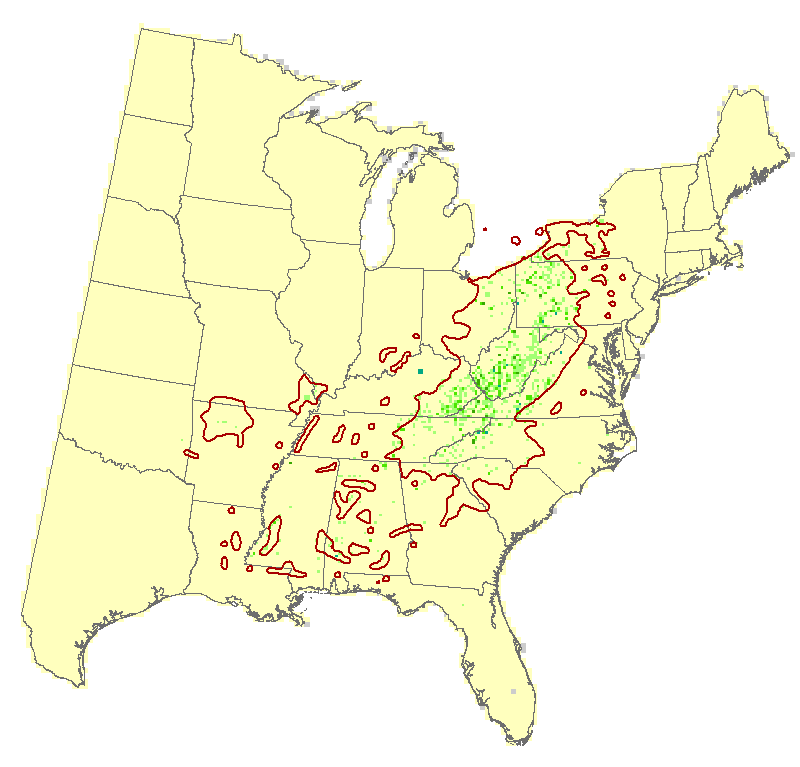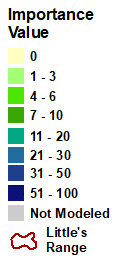cucumbertree (Magnolia acuminata)
Model Reliability: Low
| GCM SCENARIO | % Area Occ | Ave IV | Sum IV | Future/Current IV |
|---|---|---|---|---|
| Actual | 2.8 | 2.1 | 1736 | N/A |
| RFimp | 3.5 | 1.2 | 1180 | 0.68 |
| CCSM45 | 4.4 | 1 | 1261 | 1.07 |
| CCSM85 | 4.5 | 1 | 1276 | 1.08 |
| GFDL45 | 4.5 | 0.9 | 1258 | 1.07 |
| GFDL85 | 4.9 | 0.9 | 1292 | 1.09 |
| HAD45 | 4.1 | 0.9 | 1153 | 0.98 |
| HAD85 | 4.5 | 0.9 | 1222 | 1.04 |
| GCM45 | 5.2 | 0.8 | 1224 | 1.04 |
| GCM85 | 5.7 | 0.8 | 1263 | 1.07 |
Regional Summary Tree Tables
Summaries for tree species are available for a variety of geographies, in both PDF and Excel format. These summaries are based on Version 4 of the Climate Change Tree Atlas
Interpretation Guide
The cucumbertree is narrowly distributed (2.1% of area), sparse, and low IV species, but fairly abundant in the southern Appalachian spine, with a low reliable model suggesting a slight reduction in suitable habitat (though still classed as 'No change' because of its small range size). Still, there is some possibility of expansion of new habitat into New England under especially the 8.5 scenario; the SHIFT model does not suggest those areas could be colonized naturally within 100 years, however. With moderate adaptability, the species ranks as poor with regards to its capacity to cope with a changing climate.
Not Available
| 3.6 | 0.03 |
| -1.05 |  |
MODFACs
What traits will impact cucumbertree's ability to adapt to climate change, and in what way?:
Primary Positive Traits
Primary Negative Traits
Fire topkill



